Top Alternative Payment Methods
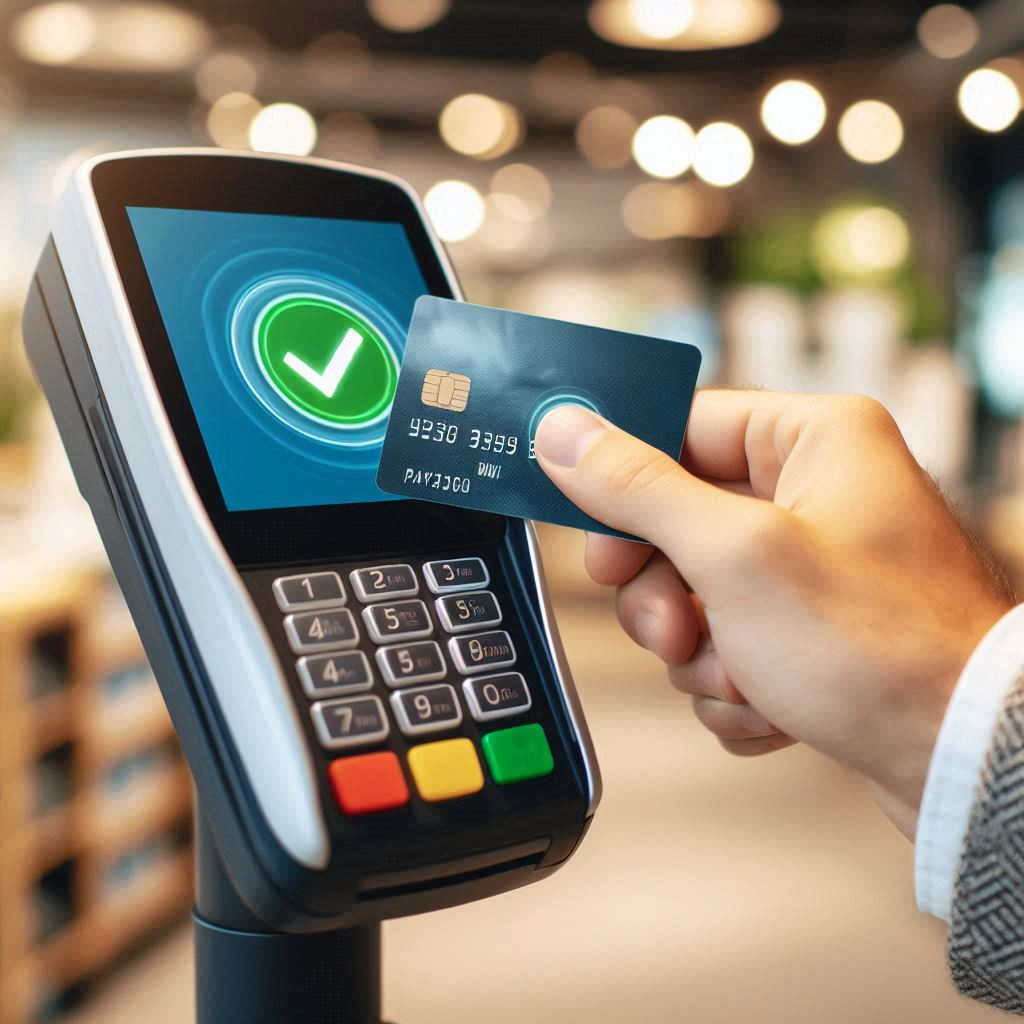
Top Alternative Payment Methods for Businesses in 2025
In today’s digital economy, traditional payment methods are no longer the only solutions. Consumers demand flexibility, security, and convenience from payment providers. Alternative Payment Methods (APMs) have become essential for businesses looking to expand their audience, enhance customer experience, and boost sales.
This blog explores the top alternative payment methods in 2025 and how they benefit businesses of all sizes.
What Are Alternative Payment Methods?
Alternative Payment Methods (APMs) refer to digital payment solutions that do not involve traditional cash or card transactions. With the rise in digital transactions, APMs have become widely adopted across the globe, offering businesses and consumers a more efficient way to process payments.
The Evolution of Alternative Payment Methods
Understanding the history of payment methods highlights how financial transactions have transformed over time. Here are key milestones in the evolution of alternative payment solutions:
- Barter System: The earliest form of exchange, where goods and services were traded directly.
- Metal Coins: Around 600 BC, metal coins made of gold, silver, and copper were introduced as currency.
- Paper Money: First introduced in China (618-907 CE), paper money revolutionized commerce due to its convenience.
- Banknotes and Promissory Notes: In the 17th century, European banks issued promissory notes, allowing customers to claim specific amounts of money.
- Checks: Originating in ancient Rome, checks became a secure and widely accepted payment method.
- Credit Cards: Introduced in 1950 by Diners Club, credit cards changed the way consumers managed their finances.
- Electronic Funds Transfer (EFT): The rise of computers facilitated the transfer of funds between individuals and businesses.
- Online Payment Systems: With the internet boom in the 1990s, online payment platforms enabled electronic transactions.
- Mobile Payments: Smartphone advancements led to the development of mobile payment solutions such as Google Pay and Apple Pay.
- Cryptocurrency: The advent of blockchain technology enabled decentralized, peer-to-peer transactions without the need for banks.
9 Types of Alternative Payment Methods
1. Digital Wallets
Examples: Apple Pay, Google Pay, Samsung Pay
Digital wallets empower users to make purchases via smartphone, tablet, or smartwatch, bypassing the need for cash or cards. By simply tapping or scanning, users can pay securely and swiftly. Digital wallets offer encryption and biometric authentication, appealing to today’s tech-savvy and security-conscious consumers.
Benefits for Businesses:
- Faster checkout times
- Lower fraud risk
- Greater convenience for mobile users
2. Buy Now, Pay Later (BNPL)
Examples: Afterpay, Klarna, Affirm
BNPL services allow customers to split payments into installments, making them a popular alternative payment solution for young consumers. The rise of online shopping has made BNPL appealing to those seeking flexible options over credit cards.
Benefits for Businesses:
- Increases conversion rates by reducing cart abandonment
- Appeals to budget-conscious customers
- Attracts new customers preferring installment payments
3. Mobile Payment Apps
Examples: Venmo, Cash App, Zelle
Mobile payment apps enable fast, peer-to-peer payments, which are ideal for small businesses and freelancers. With low processing fees and minimal setup, these apps provide an accessible, alternative payment solution.
Benefits for Businesses:
- Instant payments
- Low transaction fees
- Ideal for small transactions and in-person sales
4. Cryptocurrency Payments
Examples: Bitcoin, Ethereum, Litecoin
Cryptocurrency is becoming increasingly popular due to its decentralized nature. Accepting cryptocurrency appeals to tech-savvy customers and facilitates international transactions without high conversion fees. Despite market volatility, cryptocurrency is a top alternative payment method as more businesses adopt blockchain technology.
Benefits for Businesses:
- Lower international transaction fees
- Expands global customer reach
- Attracts cryptocurrency enthusiasts
5. Bank Transfers and Direct Debit
Bank transfers and direct debit payments are secure and reliable solutions, especially for recurring transactions like subscriptions. Though slower than digital options, they carry no additional transaction fees for customers.
Benefits for Businesses:
- Ideal for recurring payments
- Low or no transfer fees
- Builds customer trust due to high security
6. QR Code Payments
Examples: PayPal QR, Square QR
QR code payments allow customers to scan a code on their mobile devices to pay instantly, making this method suitable for small businesses and vendors. Offering QR code payments can speed up transactions and minimize the need for cash handling.
Benefits for Businesses:
Low-cost solution
Quick and easy transactions
Reduces the need for physical contact
7. E-Wallets for Global Transactions
Examples: Alipay, WeChat Pay, Payoneer
For businesses operating globally, e-wallets tailored to specific regions provide competitive advantages. Platforms like Alipay and WeChat Pay are widely used in Asia, enabling businesses to tap into international markets while supporting multiple currencies.
Benefits for Businesses:
- Access to international markets
- Localized payment experience
- Lower currency exchange fees
8. Contactless Credit and Debit Cards
Contactless payments, while traditional, operate as an alternative payment method due to their tap-and-go convenience. Customers can complete transactions without inserting or entering a PIN, making it an increasingly preferred method for its simplicity and speed.
Benefits for Businesses:
Faster checkout process
Minimizes customer wait times
Secure, low-fraud transactions
9. Prepaid Cards
Prepaid cards allow customers to load a fixed amount, making them accessible for those without bank accounts. They’re often used for online or in-store purchases and are a popular option in loyalty programs.
Benefits for Businesses:
- Appeals to customers without traditional banking access
- Useful for gifting and rewards
- Reduces credit card debt risk for customers
9 Advantages of Accepting Alternative Payment Methods
Alternative payment methods help businesses cater to diverse customer preferences and enhance transaction convenience. The benefits of offering alternative payment methods include:
- Speed and Convenience – APMs enhance customer service by enabling fast and easy transactions.
- Seamless Payment Processing – Many APMs eliminate the need to re-enter payment details for each purchase, streamlining checkout.
- Expanded Customer Base – Offering various payment options attracts and retains customers with different payment preferences.
- Increased Sales – Providing multiple payment solutions can boost conversions and overall revenue.
- Global Reach – Businesses can cater to international customers more efficiently.
- Competitive Edge – Businesses embracing APMs showcase forward-thinking adaptability, positioning themselves as industry leaders.
- Reduced Transaction Costs – Many APMs have lower transaction fees compared to traditional payment methods, resulting in cost savings.
- Enhanced Security – APMs include advanced security features like encryption, tokenization, and biometric authentication.
- Faster Settlement – Many APMs offer quicker or instant settlement times, improving cash flow management.
Why Businesses Should Offer Multiple Payment Methods
Offering multiple payment options allows businesses to reach a broader customer base and improve the shopping experience. Here’s why implementing alternative payment methods is crucial for business success:
- Boost Sales: Providing payment methods that appeal to diverse preferences can increase sales opportunities.
- Enhance Customer Loyalty: Customers value payment flexibility and are more likely to return if their needs are met.
- Reduce Cart Abandonment: Offering multiple options helps prevent abandonment due to unavailable preferred methods.
- Stay Competitive: With more businesses adopting alternative payments, staying competitive requires keeping up with these trends.
The Future of Alternative Payments
The future of APMs is set for continued innovation, with digital wallets, cryptocurrencies, and biometric authentication leading the way. Businesses must stay ahead by integrating new payment technologies to enhance customer experience and remain competitive in the digital economy.
How to Choose the Right Alternative Payment Method
When selecting an APM for your business, consider the following factors:
- Customer Preferences: Understand the payment habits of your target audience.
- Geographic Relevance: Choose payment methods accepted in the countries you operate in.
- Security Features: Ensure the method provides robust security against fraud and cyber threats.
- Integration & Costs: Assess transaction fees, setup costs, and compatibility with your existing systems.
Conclusion
Businesses must look beyond traditional payment methods to meet evolving consumer expectations in 2025. From digital wallets to mobile apps and cryptocurrency, these top alternative payment methods offer flexibility, security, and convenience, essential for success in today’s digital landscape. Adopting these alternative payment solutions not only streamlines payment processes but also creates a satisfying shopping experience that drives growth and loyalty. Explore these options to find the best fit for your business model and enhance your customer experience today.
FAQs
1. What types of businesses need alternative payment methods?
Any business that deals with online transactions or has a diverse customer base should adopt APMs to enhance convenience and customer satisfaction.
2. What is the most popular alternative payment method in the US?
PayPal is one of the most widely used APMs, alongside Venmo, Apple Pay, and Google Pay.
3. Are alternative payment methods secure?
Yes, most APMs employ encryption, fraud detection, and authentication measures to ensure security.
4. What are the potential downsides of alternative payment methods?
Challenges include technical issues, security risks, transaction fees, and limited acceptance in certain regions.
5. What are examples of alternative payment methods?
Examples include digital wallets, mobile wallets, bank transfers, BNPL services, and cryptocurrencies.



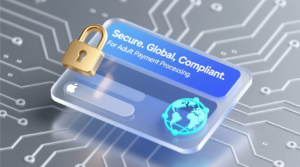
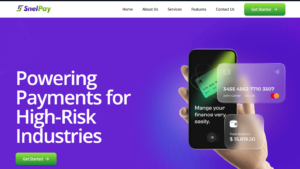
 Overview In an era where transparency and compliance define the fintech landscape, the emergence of SnelPay.io raises serious concerns regarding corporate legitimacy, regulatory compliance, and operational transparency. Although SnelPay positions itself as a UK-based payment service provider, a closer look reveals a tangled web of contradictions — from unverified incorporation details to misleading employee identities and offshore traces that challenge its credibility as a payment facilitator.
Overview In an era where transparency and compliance define the fintech landscape, the emergence of SnelPay.io raises serious concerns regarding corporate legitimacy, regulatory compliance, and operational transparency. Although SnelPay positions itself as a UK-based payment service provider, a closer look reveals a tangled web of contradictions — from unverified incorporation details to misleading employee identities and offshore traces that challenge its credibility as a payment facilitator.  Flag #1: Questionable Incorporation Claims SnelPay’s website explicitly claims UK incorporation — a statement that carries regulatory implications under the Financial Conduct Authority (FCA) and UK Companies House Act. However, upon verification through the UK Companies House public registry, no company titled SnelPay Ltd, Snel Pay Limited, or any identifiable variant was found to exist. This absence of a registered entity calls into question the legitimacy of their UK presence and any implied authorization to provide payment services within the jurisdiction. Merchant Implication: Without verified UK registration, any service contract or fund settlement involving SnelPay would lack enforceable protection under UK financial law.
Flag #1: Questionable Incorporation Claims SnelPay’s website explicitly claims UK incorporation — a statement that carries regulatory implications under the Financial Conduct Authority (FCA) and UK Companies House Act. However, upon verification through the UK Companies House public registry, no company titled SnelPay Ltd, Snel Pay Limited, or any identifiable variant was found to exist. This absence of a registered entity calls into question the legitimacy of their UK presence and any implied authorization to provide payment services within the jurisdiction. Merchant Implication: Without verified UK registration, any service contract or fund settlement involving SnelPay would lack enforceable protection under UK financial law.  The Larger Picture — When Fintech Turns Faceless The fintech world thrives on credibility, yet companies like SnelPay demonstrate how opaque operators weaponize anonymity to impersonate legitimate providers. When firms responsible for processing, holding, and transferring money operate without regulatory visibility, they not only endanger merchants’ funds, but also tarnish the industry’s overall reputation. Every unlicensed gateway or false-flag PSP creates ripple effects — eroding the confidence of merchants, investors, and regulators alike. This breeds skepticism, drives up compliance costs for genuine players, and slows down innovation in an otherwise promising sector. “When fintech turns faceless, the trust deficit becomes systemic.”
The Larger Picture — When Fintech Turns Faceless The fintech world thrives on credibility, yet companies like SnelPay demonstrate how opaque operators weaponize anonymity to impersonate legitimate providers. When firms responsible for processing, holding, and transferring money operate without regulatory visibility, they not only endanger merchants’ funds, but also tarnish the industry’s overall reputation. Every unlicensed gateway or false-flag PSP creates ripple effects — eroding the confidence of merchants, investors, and regulators alike. This breeds skepticism, drives up compliance costs for genuine players, and slows down innovation in an otherwise promising sector. “When fintech turns faceless, the trust deficit becomes systemic.”  Merchant Risk Checklist Before engaging any payment provider, merchants should follow a simple yet non-negotiable verification process: Verification Step What to Check Why It Matters Company Registration Verify on the national company registry Confirms legal existence Licensing Authority FCA / FinCEN / MAS / EU equivalent Confirms legitimacy to process funds PCI-DSS Certificate Attestation of Compliance (AOC) Ensures secure card data handling Public Leadership LinkedIn and company website listings Establishes accountability Corporate Domain Email ID and domain match company name Avoids impostor contact risk Settlement Jurisdiction Confirm where funds are processed Determines dispute recourse
Merchant Risk Checklist Before engaging any payment provider, merchants should follow a simple yet non-negotiable verification process: Verification Step What to Check Why It Matters Company Registration Verify on the national company registry Confirms legal existence Licensing Authority FCA / FinCEN / MAS / EU equivalent Confirms legitimacy to process funds PCI-DSS Certificate Attestation of Compliance (AOC) Ensures secure card data handling Public Leadership LinkedIn and company website listings Establishes accountability Corporate Domain Email ID and domain match company name Avoids impostor contact risk Settlement Jurisdiction Confirm where funds are processed Determines dispute recourse  Conclusion: Proceed with Extreme Caution SnelPay.io exemplifies the type of fintech entity that demands deeper scrutiny before any merchant engagement. From unverifiable incorporation to hidden personnel and offshore footprints, the red flags collectively outweigh the claims of legitimacy. Until the company provides clear documentation of licensing, PCI-DSS compliance, and public corporate transparency, merchants are strongly advised to avoid onboarding or sharing financial data with the entity.
Conclusion: Proceed with Extreme Caution SnelPay.io exemplifies the type of fintech entity that demands deeper scrutiny before any merchant engagement. From unverifiable incorporation to hidden personnel and offshore footprints, the red flags collectively outweigh the claims of legitimacy. Until the company provides clear documentation of licensing, PCI-DSS compliance, and public corporate transparency, merchants are strongly advised to avoid onboarding or sharing financial data with the entity.  Published Under: Fintech Integrity Watch | Merchant Risk Alert Series By Editor, TheFinRate.com – Global Fintech & Payment Intelligence due diligence for payment providersfake fintech companiesfintech due diligencefintech industry watchfintech scam alertfintech transparencyfintech trust and compliancehigh risk merchant accountmerchant account risksmerchant fund protectionoffshore payment processorspayment gateway verificationpci dss non complianceprocessorsthefinrate investigationuk payment scams
Published Under: Fintech Integrity Watch | Merchant Risk Alert Series By Editor, TheFinRate.com – Global Fintech & Payment Intelligence due diligence for payment providersfake fintech companiesfintech due diligencefintech industry watchfintech scam alertfintech transparencyfintech trust and compliancehigh risk merchant accountmerchant account risksmerchant fund protectionoffshore payment processorspayment gateway verificationpci dss non complianceprocessorsthefinrate investigationuk payment scams
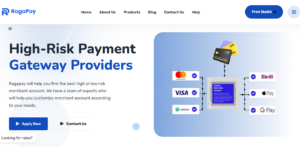
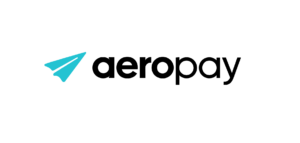

 Introduction: Understanding the “High-Risk” Tag In the world of payment processing, not all businesses are treated equally. Some industries—due to chargeback exposure, regulatory scrutiny, or reputational sensitivity—are classified as high-risk. For U.S. merchants, obtaining a high-risk merchant account can mean the difference between scaling globally or being locked out of card processing entirely. But what exactly makes a business high-risk? Why do traditional banks avoid certain merchants? And most importantly, how can U.S. businesses secure a reliable high-risk payment partner? This guide explores everything you need to know — from definitions and approval steps to real-world examples, best providers, and strategies to protect your business.
Introduction: Understanding the “High-Risk” Tag In the world of payment processing, not all businesses are treated equally. Some industries—due to chargeback exposure, regulatory scrutiny, or reputational sensitivity—are classified as high-risk. For U.S. merchants, obtaining a high-risk merchant account can mean the difference between scaling globally or being locked out of card processing entirely. But what exactly makes a business high-risk? Why do traditional banks avoid certain merchants? And most importantly, how can U.S. businesses secure a reliable high-risk payment partner? This guide explores everything you need to know — from definitions and approval steps to real-world examples, best providers, and strategies to protect your business.  Why Is a Business Classified as High-Risk? Acquirers label a business “high-risk” mainly for financial exposure reasons. Chargebacks and refunds affect not just the merchant but also the acquirer’s liability. If disputes exceed card network limits (1% of transactions or 100 chargebacks monthly), Visa and Mastercard can penalize the processor. Moreover, industries like adult or CBD face content compliance or licensing ambiguities, adding layers of KYC and AML risk.
Why Is a Business Classified as High-Risk? Acquirers label a business “high-risk” mainly for financial exposure reasons. Chargebacks and refunds affect not just the merchant but also the acquirer’s liability. If disputes exceed card network limits (1% of transactions or 100 chargebacks monthly), Visa and Mastercard can penalize the processor. Moreover, industries like adult or CBD face content compliance or licensing ambiguities, adding layers of KYC and AML risk.  What Does a High-Risk Merchant Account Mean in Practice? Having a high-risk account means your business: Goes through enhanced underwriting and document verification. Pays slightly higher processing fees (typically 4–8%). May need a rolling reserve (5–10% of funds held temporarily). Operates under strict chargeback and refund monitoring. Must maintain PCI DSS and AML compliance at all times. This setup ensures acquirers can mitigate exposure while giving merchants the ability to process globally.
What Does a High-Risk Merchant Account Mean in Practice? Having a high-risk account means your business: Goes through enhanced underwriting and document verification. Pays slightly higher processing fees (typically 4–8%). May need a rolling reserve (5–10% of funds held temporarily). Operates under strict chargeback and refund monitoring. Must maintain PCI DSS and AML compliance at all times. This setup ensures acquirers can mitigate exposure while giving merchants the ability to process globally.  How to Get Approved for a High-Risk Merchant Account in the U.S. Getting approved is not impossible — it just requires preparation. Here’s the typical step-by-step process: Identify an adult-friendly or high-risk-friendly acquirer. Avoid Tier-1 banks (Chase, Wells Fargo) and go with specialists like WebPays, PayCly, or iPayTotal. Gather strong business documentation: Business license or incorporation certificate Processing statements (last 3–6 months) Refund and privacy policy KYC documents (passport, address proof) Business plan and product samples (if applicable) Maintain a clean compliance record. Be transparent about content, transaction flows, and partner relationships. Demonstrate chargeback control mechanisms. Mention tools like Ethoca Alerts, Verifi, and 3D Secure. Negotiate a sustainable fee structure. Processors may offer tiered or volume-based pricing — review carefully.
How to Get Approved for a High-Risk Merchant Account in the U.S. Getting approved is not impossible — it just requires preparation. Here’s the typical step-by-step process: Identify an adult-friendly or high-risk-friendly acquirer. Avoid Tier-1 banks (Chase, Wells Fargo) and go with specialists like WebPays, PayCly, or iPayTotal. Gather strong business documentation: Business license or incorporation certificate Processing statements (last 3–6 months) Refund and privacy policy KYC documents (passport, address proof) Business plan and product samples (if applicable) Maintain a clean compliance record. Be transparent about content, transaction flows, and partner relationships. Demonstrate chargeback control mechanisms. Mention tools like Ethoca Alerts, Verifi, and 3D Secure. Negotiate a sustainable fee structure. Processors may offer tiered or volume-based pricing — review carefully.  Is It Legal to Charge 3% Credit Card Fees? Yes, in most U.S. states it’s legal to apply a surcharge or processing fee (usually up to 3%), as long as you: Clearly disclose it to customers before checkout. Stay within state regulations (some states restrict surcharges). Use compliant systems that display dual pricing (cash vs. card). Merchants often use this method to offset high-risk fees, though transparency is key to avoiding disputes.
Is It Legal to Charge 3% Credit Card Fees? Yes, in most U.S. states it’s legal to apply a surcharge or processing fee (usually up to 3%), as long as you: Clearly disclose it to customers before checkout. Stay within state regulations (some states restrict surcharges). Use compliant systems that display dual pricing (cash vs. card). Merchants often use this method to offset high-risk fees, though transparency is key to avoiding disputes.  What Is Considered a High-Risk LLC? A high-risk LLC is a U.S.-registered company that operates in industries or with transaction patterns prone to disputes or regulatory triggers. Examples include: Subscription-based services Adult entertainment or dating apps CBD, vape, and nutraceutical sellers Travel booking agents Cryptocurrency and forex platforms These LLCs must implement stricter internal compliance (AML, PCI DSS) and build relationships with high-risk PSPs for smooth processing.
What Is Considered a High-Risk LLC? A high-risk LLC is a U.S.-registered company that operates in industries or with transaction patterns prone to disputes or regulatory triggers. Examples include: Subscription-based services Adult entertainment or dating apps CBD, vape, and nutraceutical sellers Travel booking agents Cryptocurrency and forex platforms These LLCs must implement stricter internal compliance (AML, PCI DSS) and build relationships with high-risk PSPs for smooth processing.  What Are the 4 Types of Business Risks? Understanding your risk type helps in underwriting and negotiation: Credit Risk – customers default or dispute payments. Fraud Risk – identity theft or unauthorized transactions. Operational Risk – system downtime, delivery delays. Reputation Risk – industry stigma or content issues.
What Are the 4 Types of Business Risks? Understanding your risk type helps in underwriting and negotiation: Credit Risk – customers default or dispute payments. Fraud Risk – identity theft or unauthorized transactions. Operational Risk – system downtime, delivery delays. Reputation Risk – industry stigma or content issues.  Why Is My Bank Account High Risk? Even regular accounts may be flagged “high-risk” if: There’s unusual transaction activity. You’re receiving high-volume cross-border payments. You operate in gray-market industries. Your business has excessive refund ratios. This doesn’t necessarily mean your bank will close your account, but they may restrict certain features or require additional documentation.
Why Is My Bank Account High Risk? Even regular accounts may be flagged “high-risk” if: There’s unusual transaction activity. You’re receiving high-volume cross-border payments. You operate in gray-market industries. Your business has excessive refund ratios. This doesn’t necessarily mean your bank will close your account, but they may restrict certain features or require additional documentation.  Chargebacks and Risk Management High-risk accounts see chargeback rates far above the standard 1% threshold. Here’s how to minimize impact: Use 3D Secure 2.0 and tokenization. Be transparent in billing descriptors and refund timelines. Deploy AI-based fraud filters (Kount, Riskified, Forter). Subscribe to alerts (Verifi, Ethoca) for real-time dispute management. Acquirers price risk accordingly — the better your control mechanisms, the better your rates.
Chargebacks and Risk Management High-risk accounts see chargeback rates far above the standard 1% threshold. Here’s how to minimize impact: Use 3D Secure 2.0 and tokenization. Be transparent in billing descriptors and refund timelines. Deploy AI-based fraud filters (Kount, Riskified, Forter). Subscribe to alerts (Verifi, Ethoca) for real-time dispute management. Acquirers price risk accordingly — the better your control mechanisms, the better your rates.  Are High-Risk Funds Worth It? Yes — if managed correctly. While fees are higher, high-risk processors provide flexibility that traditional banks cannot. Merchants can: Accept global
Are High-Risk Funds Worth It? Yes — if managed correctly. While fees are higher, high-risk processors provide flexibility that traditional banks cannot. Merchants can: Accept global


